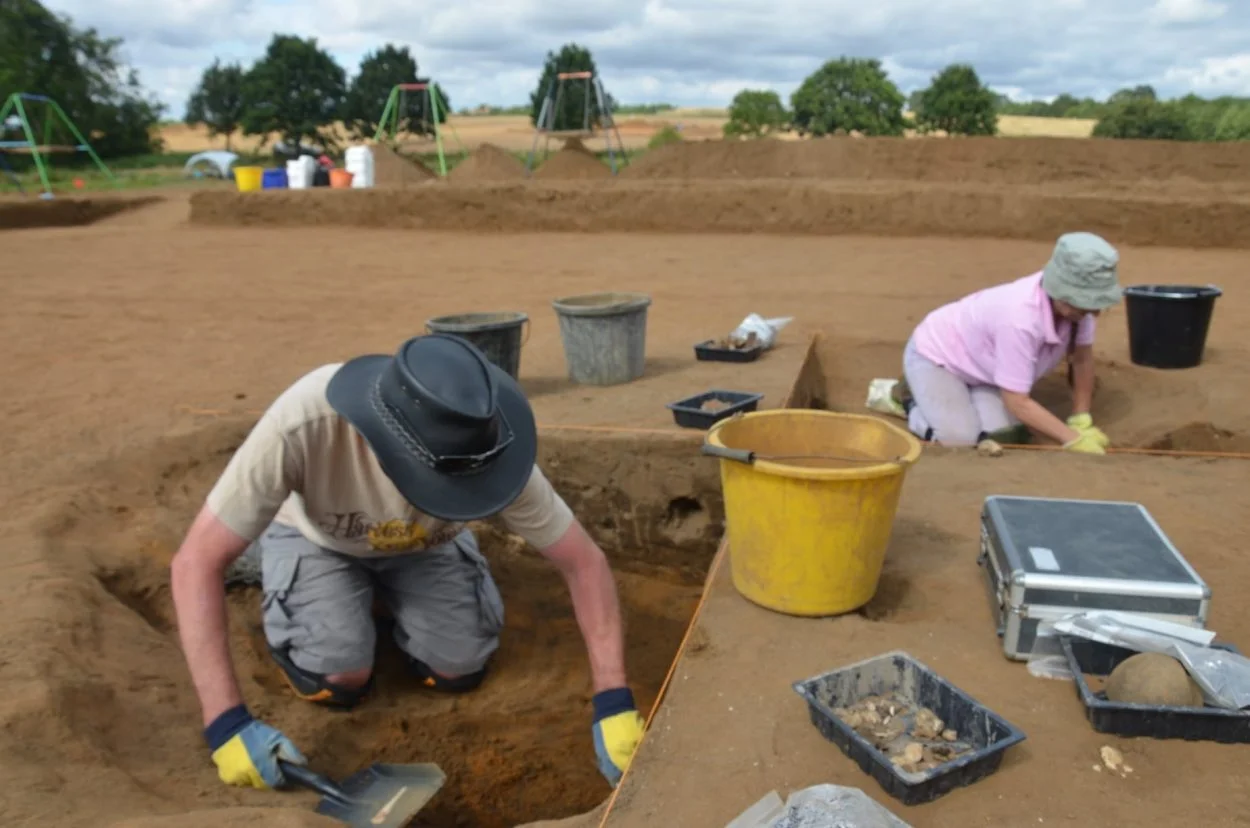Archaeologists from the Suffolk County Council Archaeological Service and Cotswold Archaeology Ltd, working in combination with a team of volunteers have uncovered a series of workshops from the 7th century where some of the Sutton Hoo treasures may have been created.
Sutton Hoo was first excavated in 1939, when Basil Brown under the auspices of the landowner Edith Pretty unearthed an undisturbed ship burial with a wealth of Anglo-Saxon artefacts.
The artefacts are considered one of the greatest archaeological treasures ever discovered in the United Kingdom, consisting of a suite of metalwork dress fittings in gold and gems, a ceremonial helmet, a shield and sword, a lyre, and a silver plate from the Byzantine Empire.
The workshops, discovered just three miles from Sutton Hoo near Rendlesham in Suffolk is part of a community archaeology project called “Rendlesham Revealed” which is funded by the National Lottery Heritage Fund. This follows a pilot project undertaken in Rendlesham in 2008-2017, which uncovered evidence of a Royal Anglo-Saxon settlement.
Over 2021, the project has unearthed pit-like features and possibly the cellars of Anglo-Saxon huts, interpreted as workshops often associated with craft working such as weaving. This is supported by the discovery of several spindle whorls and fragments of loom weights, in addition to dress items such as a copper alloy brooch and a buckle.
Also uncovered are sherds of handmade Anglo-Saxon pottery, melted metal fragments which suggest metal working, various animal bones, two glass beads, a fragment of a glass vessel, in addition to evidence of earlier Roman and prehistoric activity.
Previous discoveries have demonstrated possible links in the metal working at Rendlesham and the artefacts found at Sutton Hoo, with harness mounts from both sites showing similarities, and distinct Y-shaped grooves on birds’ beaks found on several artefacts (although finds of the detail have been found on other artefacts from the East of England).
A Suffolk County Council spokesman told the DailyMail: “There is evidence of craft working at Rendlesham, so it is possible they may have produced some of the objects discovered in the Sutton Hoo burial grounds.”
Header Image Credit : Suffolk County Council Archaeological Service





